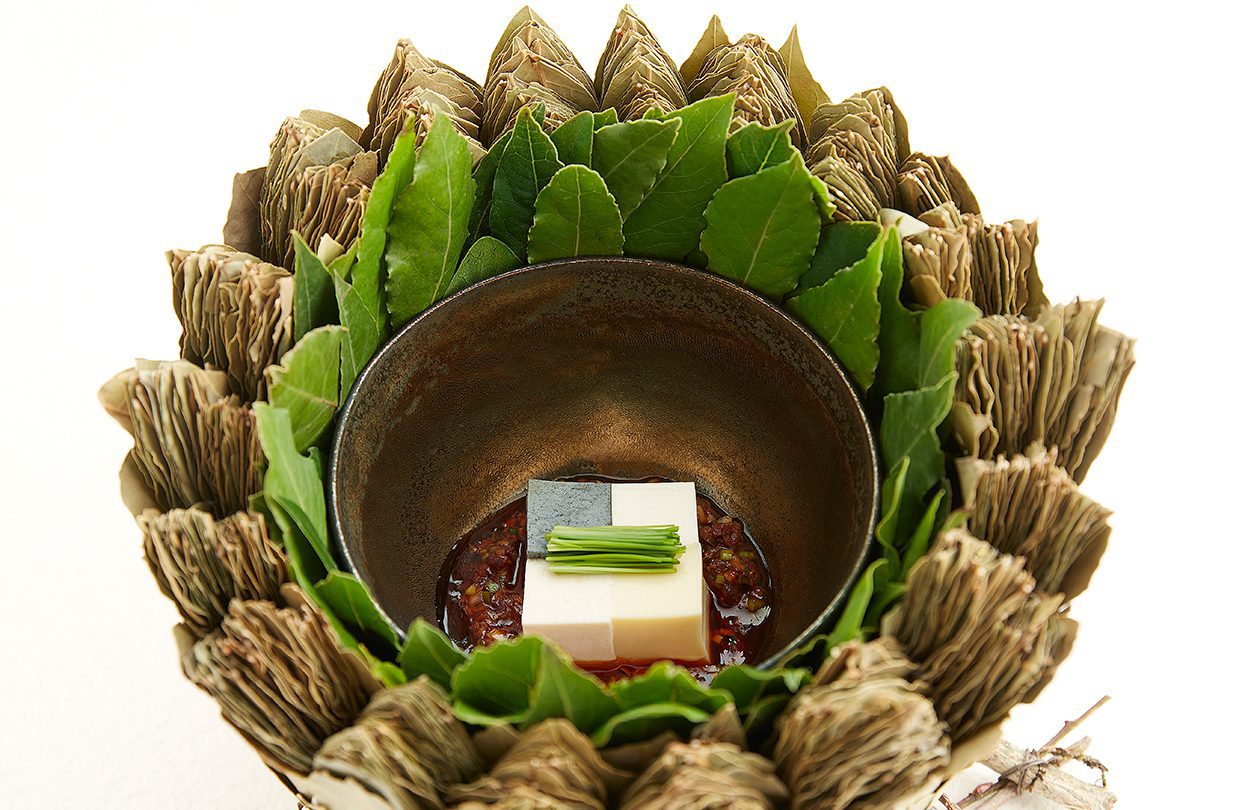[vc_row][vc_column][vc_column_text]Chefs around Asia are daring to give a modern spin to age-old dishes. Their goal: keeping the tastes of the past alive for the next generation.
Very few subjects can spark heated debate like how to cook traditional recipes. Anywhere in the world granny’s recipes are sacrosanct, handed down unaltered from generation to generation. The foods people eat are embraced by a nation and identify both the people and their country.
Yet chefs all around Asia have been tinkering with the classics from their respective cuisines. Unsurprisingly, their efforts have been met with scepticism and even hostility but have also been praised for their innovation; their restaurants have won recognition from the Michelin Guide and the Asia’s 50 Best Restaurant List or have earned the stamp of approval from the likes of Secret Tables among many others.
Modern reinterpretation doesn’t mean recklessly toying with food however. Chef Thitid “Ton” Tassanakajohn of modern Thai restaurant Le Du in Bangkok cautions against changing dishes just for the sake of changing them. “Before I put a dish on the menu it has to look nice, taste Thai and be better than the original,” he states unequivocally. “If you make it worse, there is no reason, no point.”
World Travel Magazine talked to Chef Ton and other chefs around Asia about their innovative approach to traditional cuisines. They shared their insights on what they have set out to do, the future of traditional foods and their personal versions that have made each of their restaurants a culinary destination in its own right.
Chef Darren Teoh
Dewakan, Kuala Lumpur
Dewakan holds the unique honour of being the first restaurant in Malaysia to make the Asia’s 50 Best Restaurants list, debuting this year at number 46. Chef Darren Toeh applies the techniques of the modern kitchen to traditional Malay foods, sourced and foraged from around the country.
[/vc_column_text][/vc_column][/vc_row][vc_row][vc_column][vc_column_text]
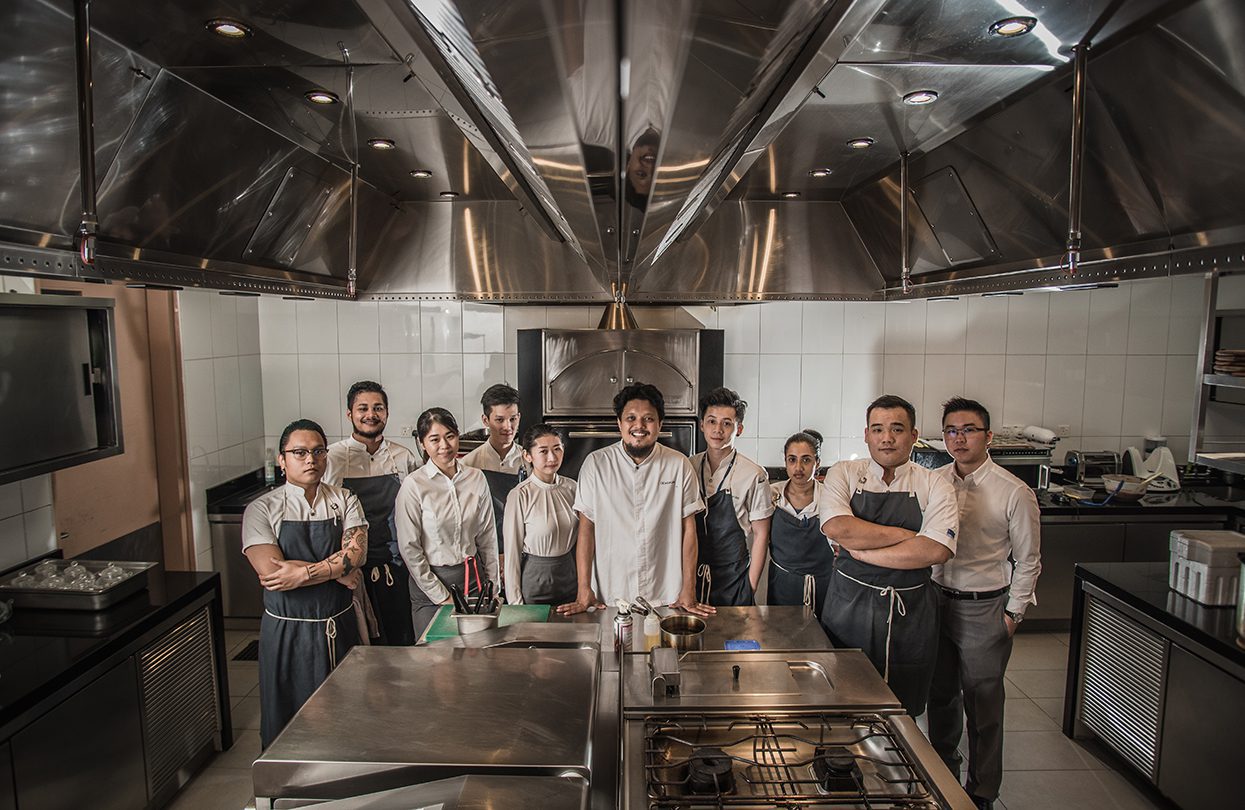
Dewakan

Dewakan black banana porridge uses heirloom rice mixed with banana served with cured egg, pickles and duck sausage
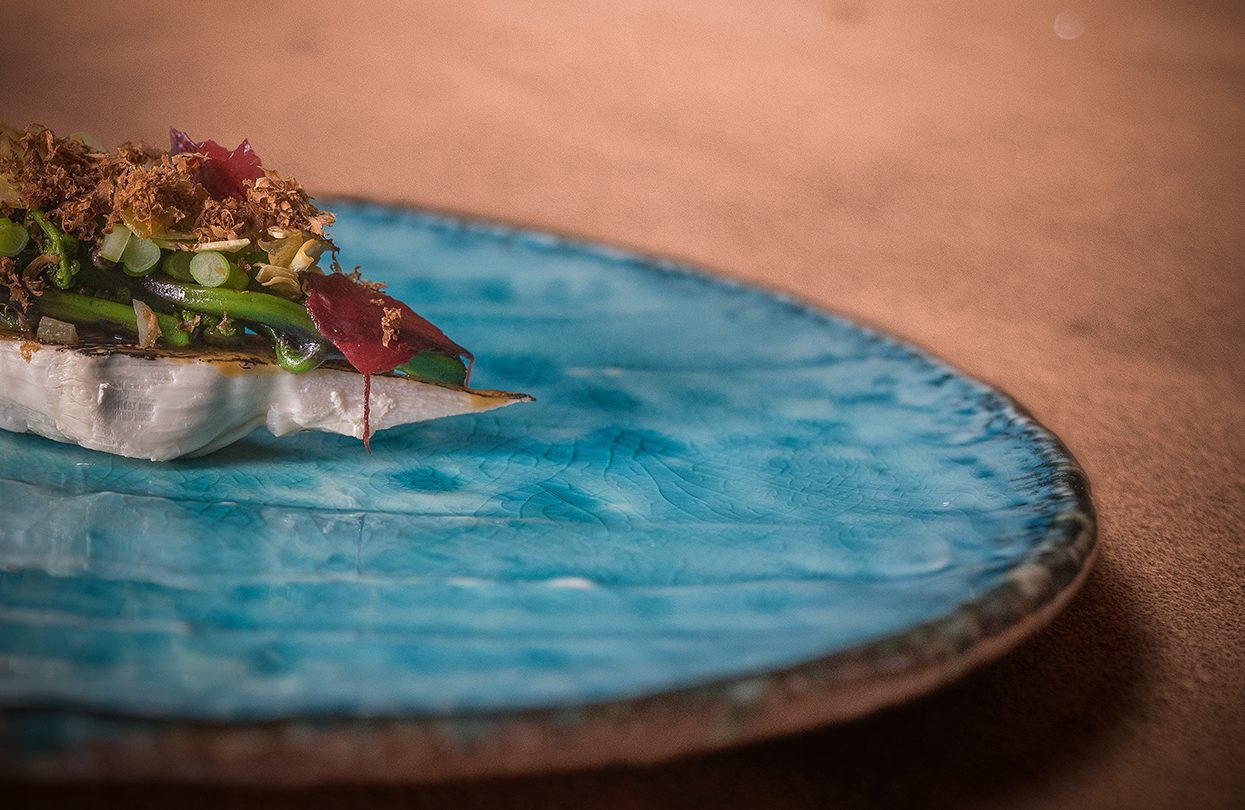
Dewakan BANANA HEART & KERDAS
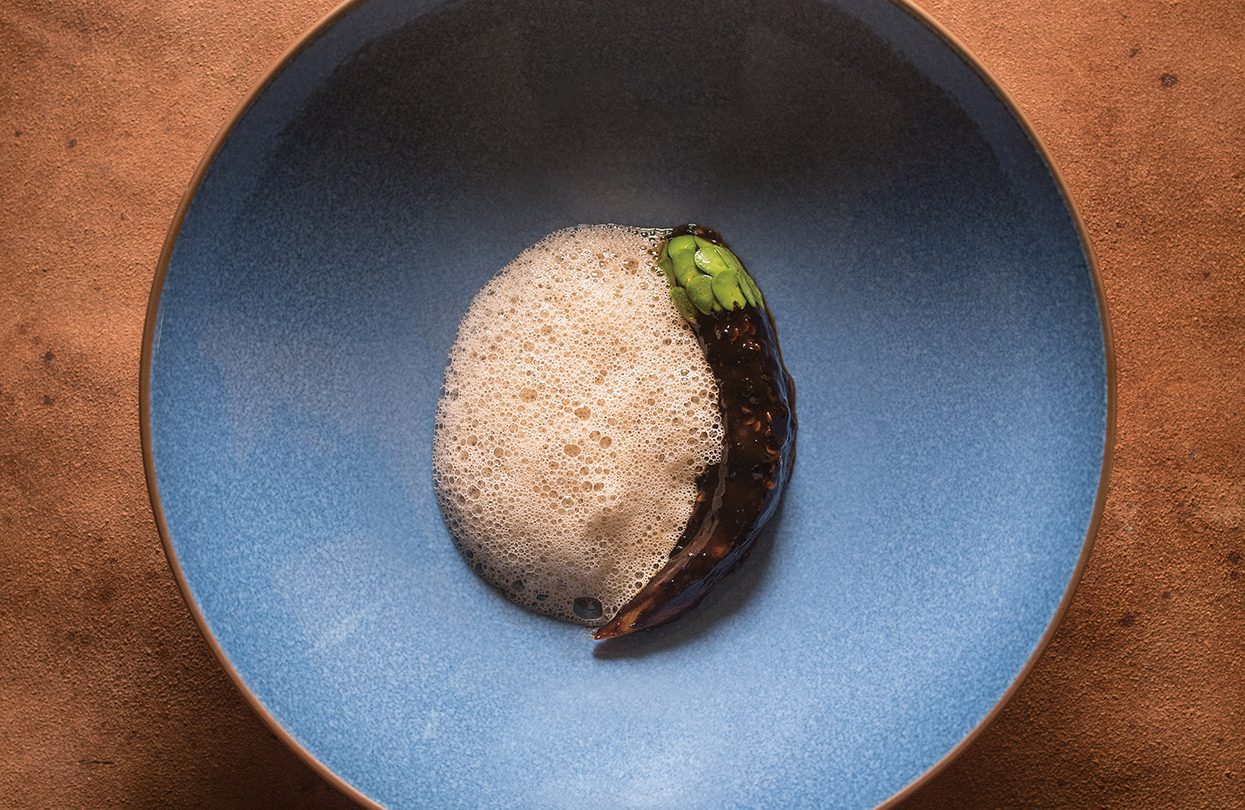
Dewakan roast eggplant with buah keluak and candelnut oil
[/vc_column_text][/vc_column][/vc_row][vc_row][vc_column][vc_column_text]
The name of the restaurant is a neologism formed from “Dewa” or God and “Makan” meaning eating or food, the idea being that the foods of the land are God-given riches. “Our focus has always been to look at the ingredients we are gifted with and then find an interesting way to share them,” says Chef Darren. He blends the techniques of molecular gastronomy with ancient ones like curing and fermentation to produce dishes like a black banana porridge made with heirloom rice, locally farmed goat with petai (stink beans) or roast eggplant with buahkeluak, the distinctive cured black nut of Malay and Peranakan cuisine.
Diners were often surprised to learn that the restaurant actually got its start as an exercise in entrepreneurship in the food and beverage industry at KDU University College and that the restaurant was located on a suburban campus. But that is changing. In November, the restaurant will reopen atop Naza Tower in the heart of Kuala Lumpur’s City Centre bringing them closer to their public. Chef Darren assures that moving “downtown” will give his team room to grow but will not change the way they approach their food. “We will still remain the same restaurant,” he says. “Perhaps a little more focused. A little more adult. A little more convinced of what we are doing and why it is important.”
Jordy Navarra
Toyo Eatery, Manila
Winner of the One to Watch Award in 2018 and the only Filipino chef to make the Asia’s 50 Best list in 2019 at number 43, Chef Jordy Navarra is one of the most visible ambassadors for Filipino food today. “If you go around the country a bit, people use the ingredients around them,” Chef Jordy says. “It’s highly regionalised and certain areas are only aware of what’s available in their area.”
[/vc_column_text][/vc_column][/vc_row][vc_row][vc_column][vc_column_text]
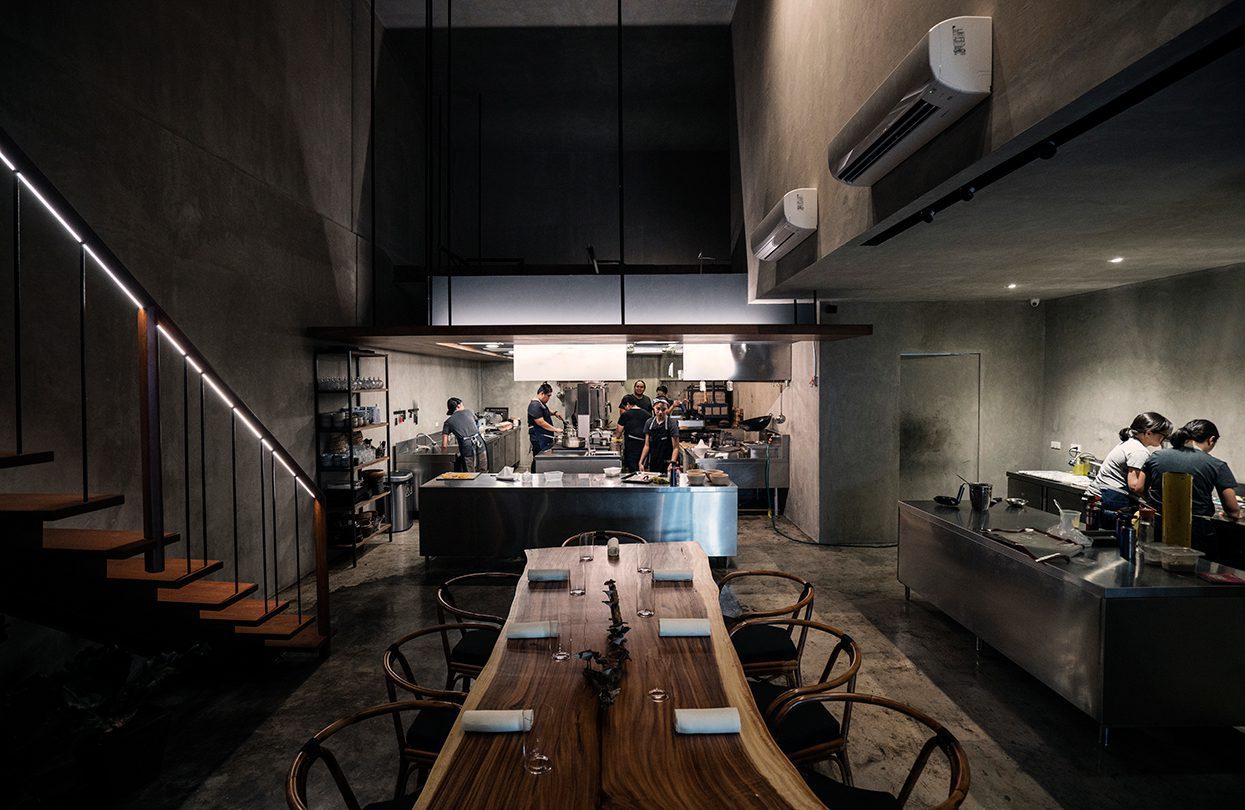
Toyo’s open kitchen
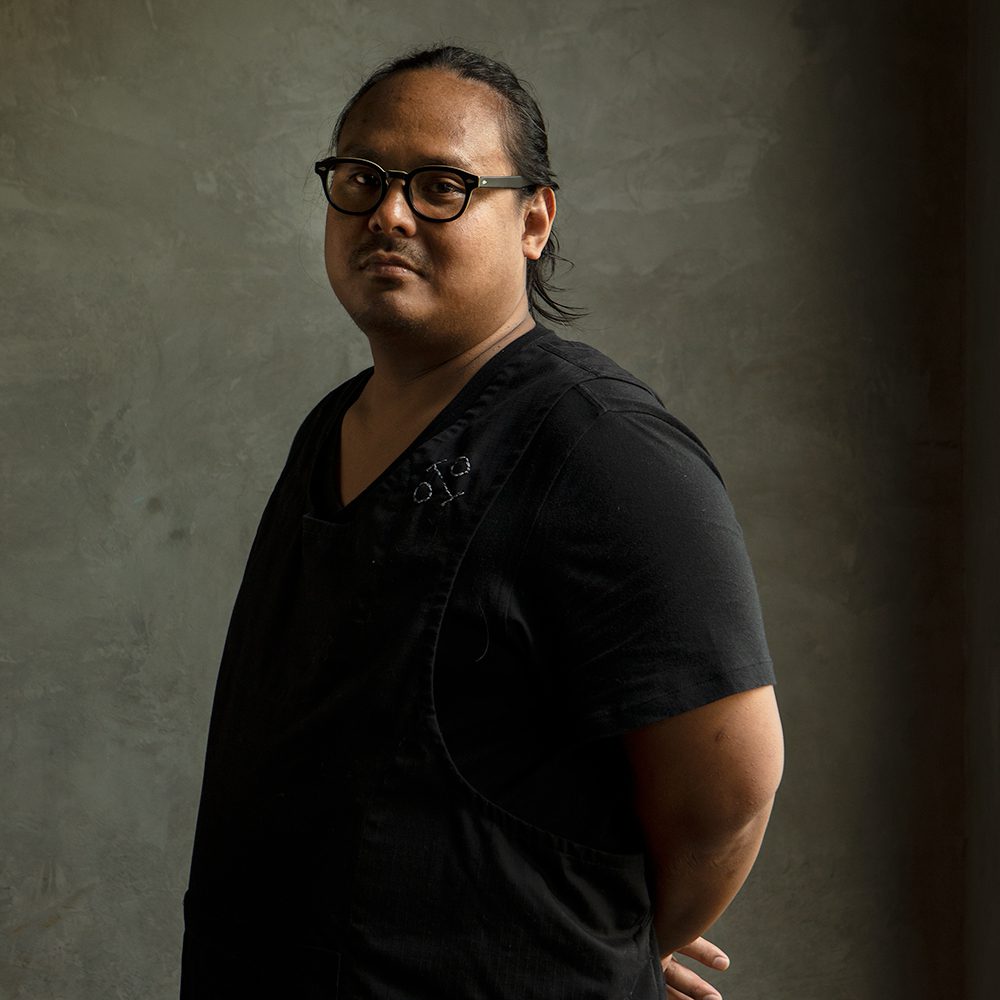
Toyo Eatery Chef Jordy Navarra

Toyo Eatery nilupak kamote (local sweet potato) sea urchin nata de coco, dalandan, grated cashew nuts, and a blue ternate petal, on top of a cassava crisp

Toyo Eatery lightly cured kinilaw made with a variety of local fish and produce
[/vc_column_text][/vc_column][/vc_row][vc_row][vc_column][vc_column_text]
At Toyo Eatery, Chef Jordy lets ingredients from around this nation of 7000 islands shine. His most famous dish is Bahay Kubo, named for a nursery rhyme that every Filipino child learns. The song lists eighteen different vegetables and spices starting with jicama, eggplant and wing bean. At Toyo that becomes a garden of all eighteen ingredients on a plate that encapsulates the varied produce of the Philippines.
He goes around the country meeting people and telling them that “what’s special is what’s your every day”. He reels off examples: kinilaw is usually marinated raw fish, but can also be made with vegetables; sinigang, a sour soup, can be fish or meat; adobo, often considered the national dish of chicken or pork braised in soy sauce and vinegar, can be made with frog. He brings back dried seaweed from Ilocos in the north for its flavour of the sea or delicate first press fish sauce from small producers around the country that often gets thrown away.
Chef Jordy acknowledges that moving Filipino food forward is not without its challenges. “Filipinos are slowly becoming more comfortable with the idea of serving their food [in a fine dining context]. Filipino food is cooked at home, we were never looking at it from that perspective before.” But he is adamant. “Our food is on par with anyone else’s,” he says. “Let’s share it.”
Peter Cuong Franklin
Anan Saigon, Ho Chi Minh City
Chef Peter Cuong Franklin returned to his native Vietnam that he left as a child just two years ago. Since then his restaurant Anan (“Eat eat” in Vietnamese) has attracted international attention for its unique take on traditional Vietnamese tastes. “Without change, I believe Vietnamese cuisine risks being trapped in the traditional cheap ethnic food boundaries,” says Chef Peter. He is proud of Anan Saigon’s location in a shophouse in a traditional wet market street, but he also points to the Bitexco Tower a few steps away, the glass-and-steel skyscraper that is the symbol of Ho Chi Minh City’s modernisation. “We are creating a new modern Vietnamese cuisine that is grounded in history and traditions yet progressive and international in outlook,” he states.
[/vc_column_text][/vc_column][/vc_row][vc_row][vc_column][vc_column_text]

Anan Saigonanan kitchen team

Nhau Nhau is Anan’s destination bar
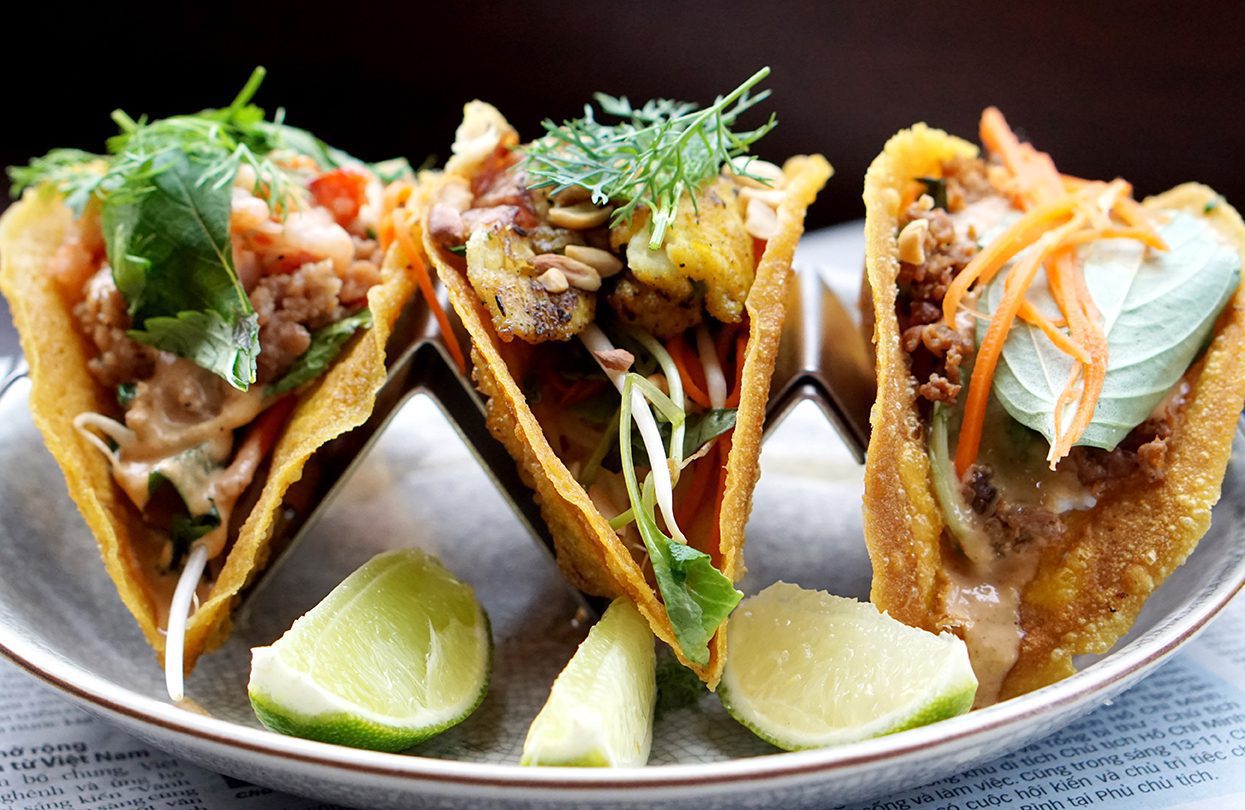
Anan Saigon Banh Xeo Tacos

One of Chef Peter’s reinterpretations of Vietnamese flavours Pumpkin and Shrimp Dalat Pizza

Phojito Cocktail at Nhau Nhau
[/vc_column_text][/vc_column][/vc_row][vc_row][vc_column][vc_column_text]
The embodiment of his philosophy is his bánhxèo taco. A homage to the traditional rice and turmeric crêpe filled with shrimp and pork from Hue in central Vietnam, his version is folded and served to resemble a Mexican taco. “It took us over six month to perfect the technique to making a light and crispy taco shell,” he says proudly. It was worth the effort. The dish is one of the restaurant’s most popular items with both Vietnamese and foreign guests. Another stunning dish is a clear broth spiked with herbs like lemongrass and chilli, packed with giant mussels and artichokes, an ingredient planted by the French in colonial times.
In the coming months look for a new 12-course degustation menu using local ingredients such as caviar from Chef Peter’s home town of Da Lat.
Lg Han
Labyrinth, Singapore
“Cooking Singapore food, preserving Singapore flavours and showcasing the produce are important for a local Singapore guy like myself,” says Chef Li Guang Han. “It’s a way to pass on recipes and flavours to the next generation.” But passing on recipes doesn’t mean not adding a creative touch. “For me, my own interpretation of Singapore food is something that comes naturally,” says Chef Li Guang. “It’s my interest and my passion. It’s just the way that I express myself.” He calls it New Singapore Cuisine, but others have dubbed the cuisine Mod Sin and look up to Chef Li Guang as one of the leaders of the movement.
[/vc_column_text][/vc_column][/vc_row][vc_row][vc_column][vc_column_text]
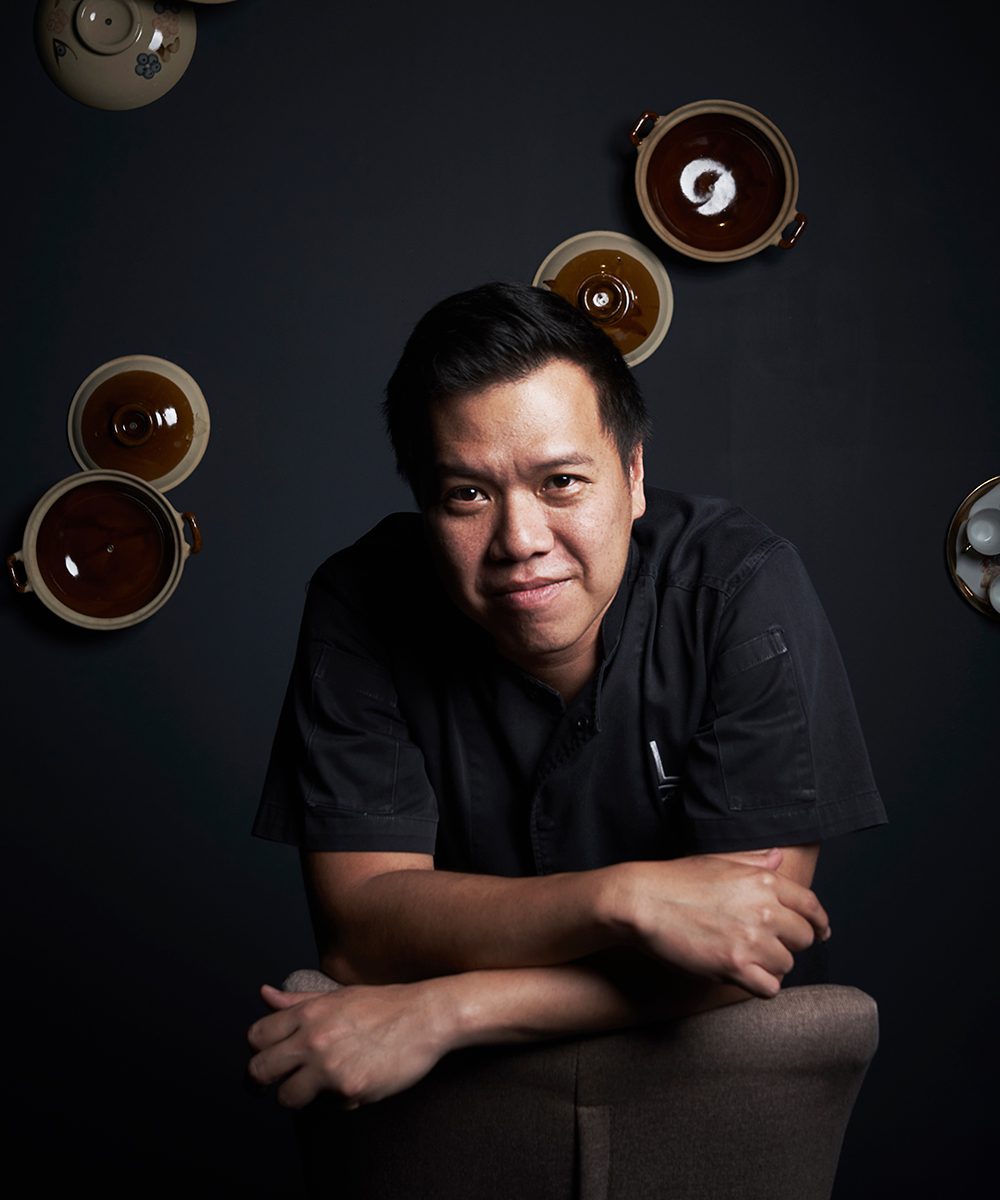
Labyrinth’s LG Han
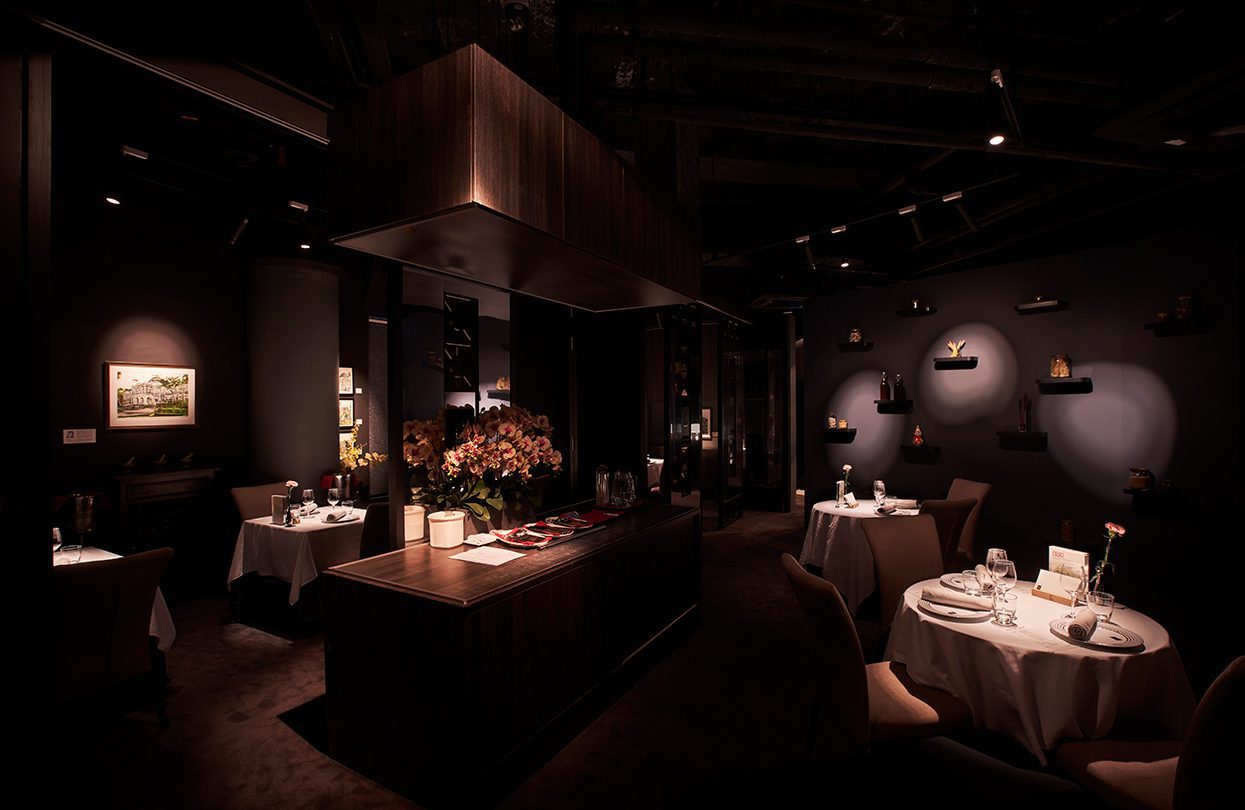
The interior of Labyrinth includes objects from the chef’s grandmother’s kitchen and specially commissioned artworks

Labyrinth Cristal de chine Caviar

“Ang Moh” (Westerner) Chicken Rice
[/vc_column_text][/vc_column][/vc_row][vc_row][vc_column][vc_column_text]
He shrugs off being a role model but sees the change as a necessary step in encouraging Singaporeans to re-evaluate their own food. “I am really trying to change perceptions of local food being just hawker food, cheap food, [raising it] to a gastronomical level.” He wants local chefs to see that “fine dining isn’t just limited to French or Italian or Japanese. I’m trying to get local guys to understand their roots.” His one-Michelin star Labyrinth is going a long way in doing just that.
But the way he redefines and re-expresses the dishes of his childhood are deeply seeded in the story of his memories growing up in Singapore. “Some dishes are tributes to my grandmother interpreted in my own way,” he says. “Some are more modern like the chilli crab ice cream, the only thing that’s been kept on the menu since day one” albeit in different guises. He also champions excellent produce from local gardens, farms, artisanal producers and fisherman, with 90% of his ingredients coming from within the tiny city-state.
André Chiang
Sichuan Moon, Macau
Chef André Chiang may have closed his legendary Restaurant André in Singapore last year, but he is hardly resting on his laurels. As if being the driving force behind the scenes of celebrated restaurants including Singapore’s Burnt Ends and RAW in Taipei (“I’m letting my chefs be the face of the restaurants, and I take a step back crunching ideas and support them whenever they need me”), a packed schedule of speaking engagements and a culinary academy in the works, he has devoted his energy to capturing the essence of Sichuan food at his new restaurant Sichuan Moon, located in the opulent Wynn Palace Hotel.
[/vc_column_text][/vc_column][/vc_row][vc_row][vc_column][vc_column_text]

André Chiang – Culinary Director of Sichuan Moon

Sichuan Moon – Main Dining Area by Barbara Kraft
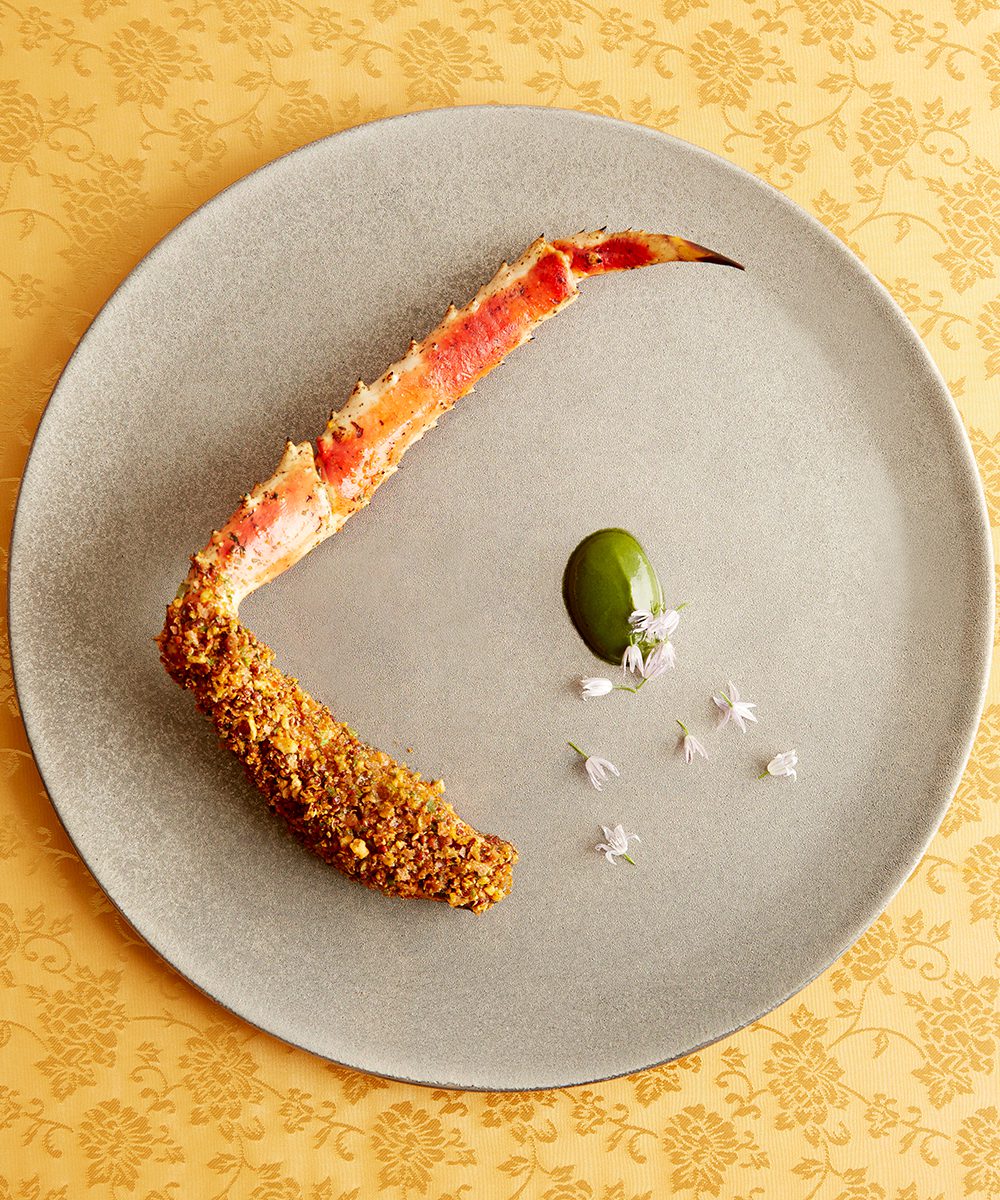
King Crab Leg one of the 26 courses of the degustation menu at Sichuan Moon
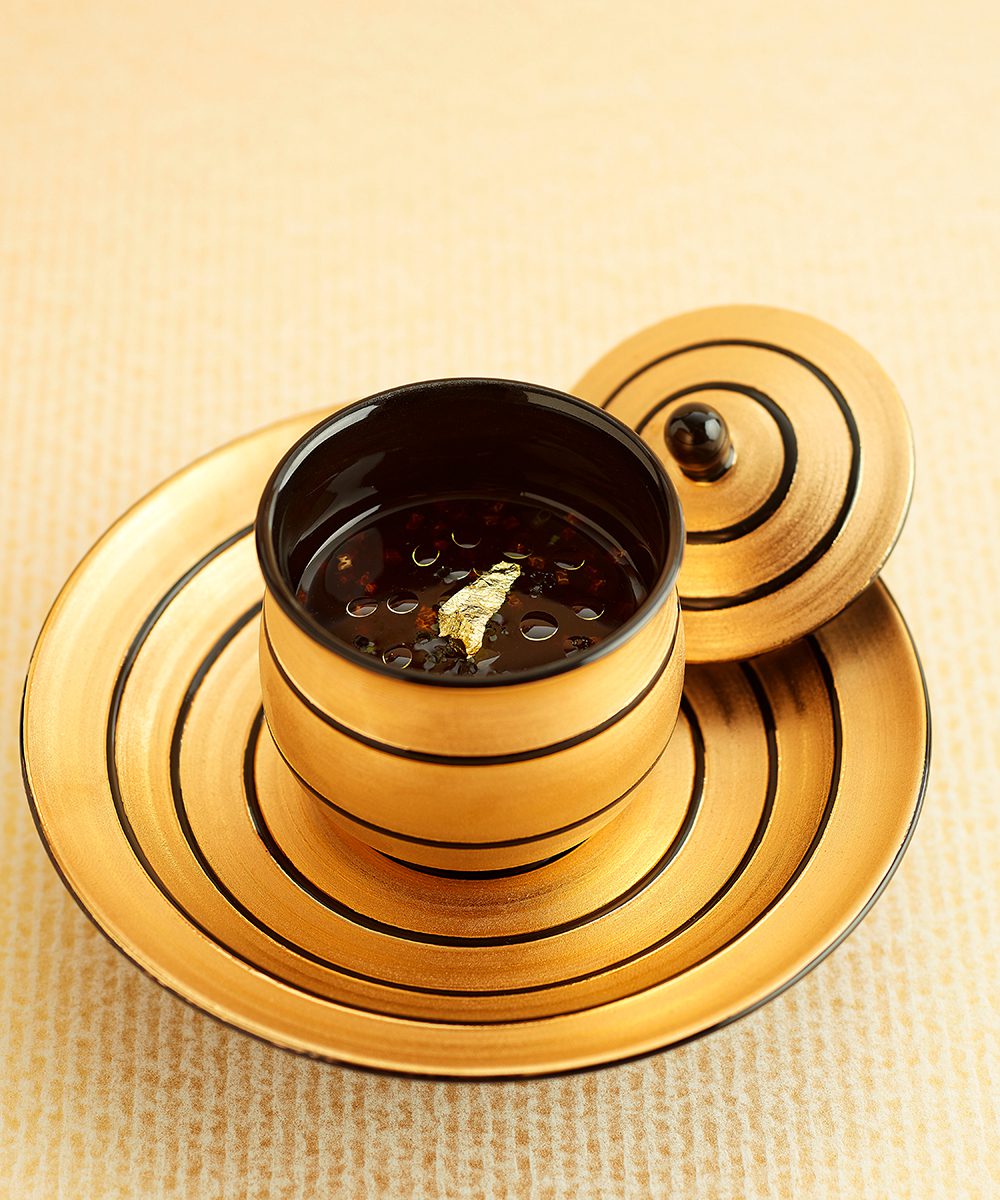
Peppercorn Flavored Duck Foie Gras With Mushrooms from Sichuan Moon
[/vc_column_text][/vc_column][/vc_row][vc_row][vc_column][vc_column_text]
“I’m not trying to twist any cuisine!” he laughs. “But I want to transform it in a way we all understand. It should taste clearer and better than before. The stereotype of Sichuan food is that it’s all chilli oil and mala [the numbing sensation of Sichuan peppercorns] but I want to show you there is a lot more to it.”
“My take on Sichuan cuisine brings it to a world-class level. I think in Sichuan Moon we definitely did it!” He points to the elegantly plated hot and sour soup with the glistening soup poured at the table and a dessert he calls Sour-Sweet-Bitter-Spicy. He won’t disclose the secret, but like a treat out of Willy Wonka’s chocolate factory, the diner gets those sensations one after the other from the chewy morsel.
The reception to Sichuan Moon has been overwhelming, “Our job is to redefine the flavour of this generation, just like 80s architecture, 60s music, 90s fashion.” He also see the transformation as preservation. “If we don’t take ourselves to another level, or refuse to translate the beauty of Chinese cuisine, the knowledge and our beautiful Chinese culture will one day disappear.”
No detail has been left to chance. “We even get the snow block from 7500 meter Gong-Gah snow mountain hand carried down, simply to melt it for our tea brewing!”
Thitid “Ton” Tassanakajohn
Le Du, Bangkok
Chef Ton Tassanajohn of Le Du (one Michelin star and number 14 on the most recent Asia’s 50 Best list) recognises the hard work that goes into reinventing classic dishes. “We wanted to do modern Thai inspired cuisine from day one, but the interpretation has changed dramatically. When I opened the restaurant I was afraid to be too Thai.”
[/vc_column_text][/vc_column][/vc_row][vc_row][vc_column][vc_column_text]

Le Du opened almost six years ago

“Ton” Tassanakajohn
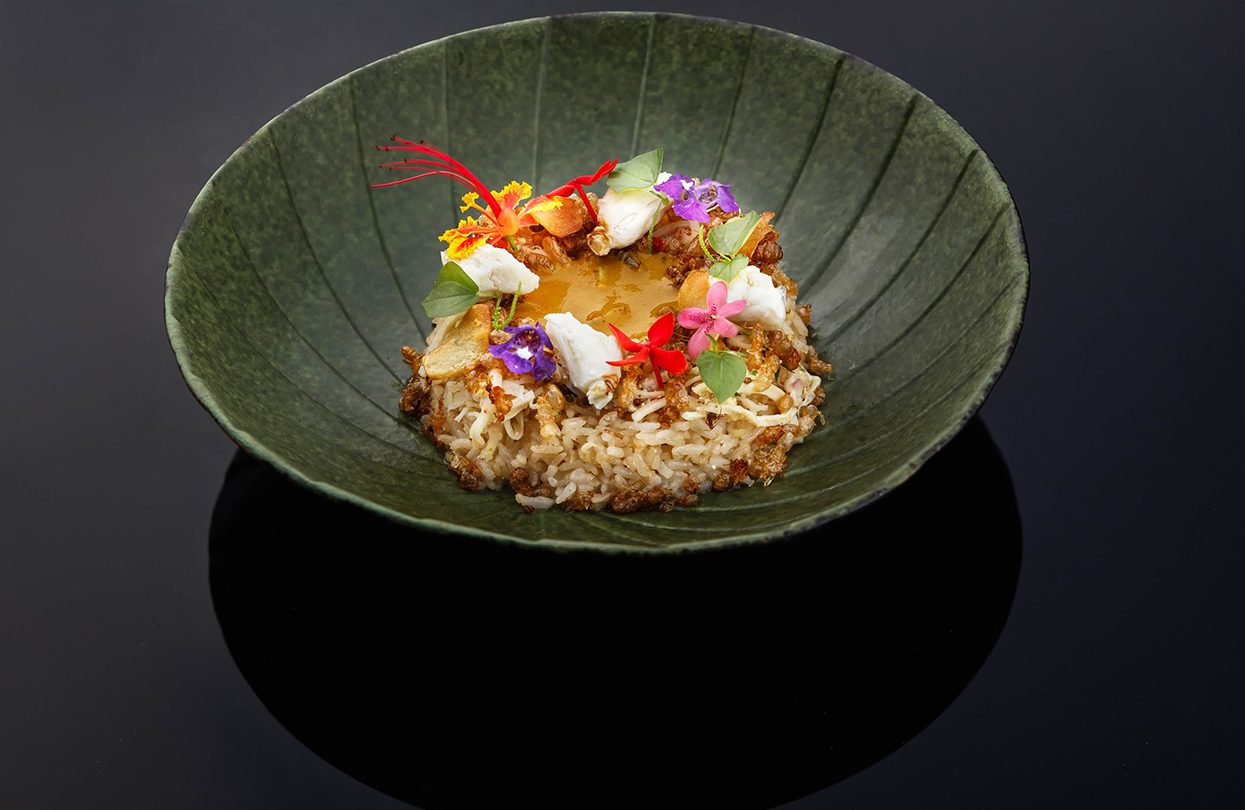
Le Du – Ant larvae, blue swimming crab and young bamboo in a southern style curry
[/vc_column_text][/vc_column][/vc_row][vc_row][vc_column][vc_column_text]
But his confidence grew and so did his comfort with his Thai identity. “Now it’s not focused on ‘is this going to be too Thai or not Thai enough?’ What I care about is that it looks modern and it tastes Thai. If you close your eyes, you still know that you’re eating Thai food.”
He points to his signature grilled river prawn as an example. “It’s better than the original!” lightly cooked with balanced spices and beautiful plating. Another example: his khao chae with ice cream. “I don’t like khao chae,” he admits, referring to the curious Thai dish of rice dipped in chilled jasmine water and eaten with a variety of sweet and savoury garnishes and relishes. “In fact I hate the dish.” Many people share his sentiment about the old-school dish that was appreciated for its cooling properties in the sweltering summer months. Transforming it into an ice cream dish preserved the tastes while adapting it to current tastes. “I don’t want it to disappear just because the young generation doesn’t like it,” he explains.
He sees modern Thai cuisine as a way to preserve the cuisine for generations to come. “What I try to do is to make people realise that there is a way to approach our cuisine differently, to make it more interesting, cooler, to make more kids want to cook Thai food.”
He too sees the danger of losing traditions. “The most important thing is for our generation to keep cooking Thai food. Ten years ago all the chefs wanted to cook French Italian, Japanese food. And that’s sad. If that continues, it means there is no future for the cuisine, no one cooking Thai food any more. And that is what we have to try to preserve.” ◼[/vc_column_text][vc_column_text]Subscribe to the latest edition now by clicking here.
© This article was first published in Oct-Nov 2019 edition of World Travel Magazine.[/vc_column_text][/vc_column][/vc_row]

